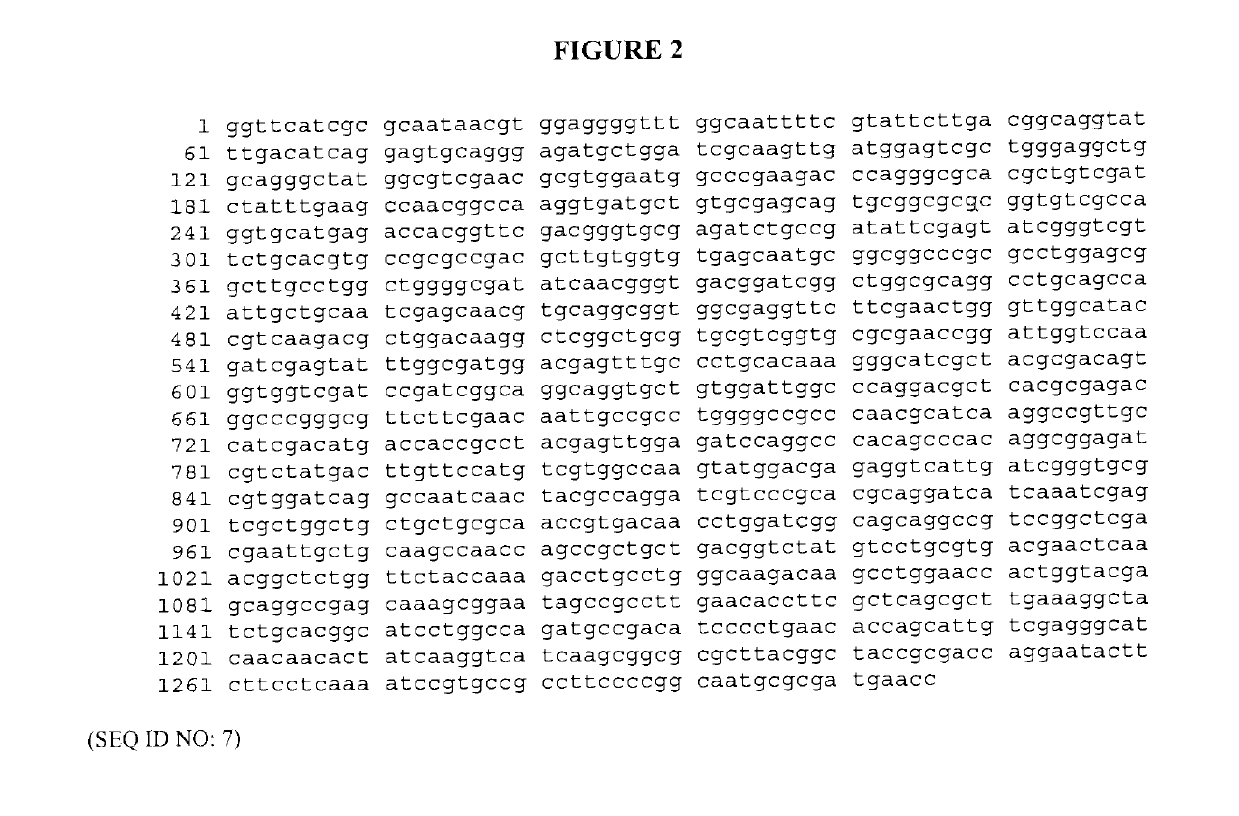Bordetella detection assay
a detection assay and bordetella technology, applied in the field of pathogen detection, can solve the problems of difficult differential diagnosis, permanent brain damage or even death, and difficulty in diagnosing whooping cough in its early stages
- Summary
- Abstract
- Description
- Claims
- Application Information
AI Technical Summary
Problems solved by technology
Method used
Image
Examples
example 1
llection and DNA Extraction
[0112]A total of 306 nasopharyngeal swab samples were prepared and tested for assay validation purposes. Of the 306 samples, 290 were actual clinical specimens obtained from patients. The remaining 16 samples were “contrived” (i.e., positive control) B. parapertussis specimens. The contrived specimens were prepared by spiking pathogen-negative nasopharyngeal swab matrix with cultured B. parapertussis organisms.
[0113]The nasopharyngeal swabs were collected from patients and placed immediately in Aimes media with charcoal or in liquid viral transport media (Micro Test™ M4 media; Remel, Inc.), frozen at −20° C. for transport, and stored at −20° C. until assayed.
[0114]For the Bordetella spp. assays described below, DNA was extracted from the nasopharyngeal swab samples. Briefly, the samples were thawed and 200 μl of each sample was aliquoted into 1.5 ml Eppendorf tubes. Additional tubes containing 200 PI of diluent with positive control DNA (see below) or no D...
example 3
ion of Multiplex PCR Assay Results
[0144]The results of the multiplex assay described above were compared to other detection assays. Aliquots of all samples were run in a secondary assay for confirmation of the multiplex assay result. B. pertussis was assessed in the ProPertussis assay (Prodesse, Inc.) which detected a different target nucleic acid within the IS481 insertion sequence as well as a separate internal control. B. parapertussis was assessed using a Taqman®-style assay for the IS1001 insertion sequence using primers and probes identical to the primer and probe regions of the Scorpion and reverse primer described above.
[0145]Each of the 306 samples was assayed simultaneously for B. pertussis and B. parapertussis in the multiplex assay. Additionally, the 306 samples were assayed once using the ProPertussis assay, and once using the B. parapertussis Taqman® assay. For the B. pertussis assays (multiplex and ProPertussis), a Ct value of ≤37.0 was scored as positive. For the B. ...
PUM
| Property | Measurement | Unit |
|---|---|---|
| temperature | aaaaa | aaaaa |
| temperatures | aaaaa | aaaaa |
| time | aaaaa | aaaaa |
Abstract
Description
Claims
Application Information
 Login to View More
Login to View More - R&D
- Intellectual Property
- Life Sciences
- Materials
- Tech Scout
- Unparalleled Data Quality
- Higher Quality Content
- 60% Fewer Hallucinations
Browse by: Latest US Patents, China's latest patents, Technical Efficacy Thesaurus, Application Domain, Technology Topic, Popular Technical Reports.
© 2025 PatSnap. All rights reserved.Legal|Privacy policy|Modern Slavery Act Transparency Statement|Sitemap|About US| Contact US: help@patsnap.com


